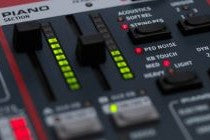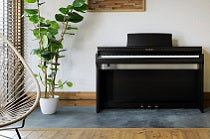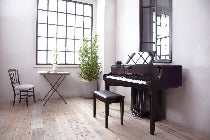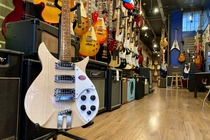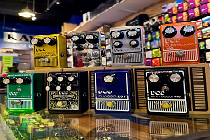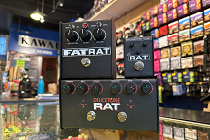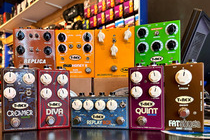So you've got the guitar playing like a dream and you amp is set JUST so, but you want to go further; add that certain 'Je ne sais quoi' to your tone.
What you might be after is a guitar effect of some sort. Here, we look at the common categories of effect. In later blogs, we'll cover each in more depth, and show to integrate them into your rig.
Effects broadly fit into four categories; filters and EQs, overdrives and distortions, modulation effects and time-based effects such as delays and reverbs.
Filters and EQs include effects such as envelope filters, sweep filters such as the wah pedal and EQ units, usually ranging from 5 to 10 bands. Filter effects can have very subtle or very extreme effects on the tone by changing the frequency limits on the sound. EQs are more used to shape a general sound, boosting bass response while cutting down on treble frequencies, for example.
Overdrives and distortions add 'crunch' or 'gain' to an amp's sound by driving the pre-amp harder. Overdrives tend to be less severe, and used for classic rock and blues music, and are often used to 'warm up' the tone of the amp. Distortion pedals tend to be more extreme, and can be used for rock and metal genres, adding massive amounts of gain for that 'heavy' sound.
Modulation effects are where the real fun comes in. This encompases many different effects, but the most common are chorus, flanger, phaser, tremolo, octave effects and so on. They take the guitar sound and 'modulate' and shape it, adding the sensation of guitar layering and movement. Much fun is to be had in this category, so we suggest as much experimentation as possible!
Finally, we have time-based effects such as delays and reverbs. These are often confused, but they are in fact different things. Delays will take a played note and repeat it over and over until it decays (depending on the settings used). You may have heard of 'analogue' and 'digital' delays - these simply refer to the type of 'repeat' you get. Analogue delays tend to be warmer and the repeated note will sound slightly different to the original. Digital delays make the repeated note sound much like the first, with a less 'natural' sounding decay. One is not better than the other, it's all about personal preference.
Reverb, on the other hand, replicates the natural reverberation of a room or hall. If you imagine playing in your bedroom, chances are the sound will be quite dry with little to no echo as the soft furnishings absorb the sound. Now imagine playing in a large hall - LOTS of echo! That is reverb.
Hopefully this has at least organised the bewildering amount of effects that are on offer and focused your mind on what you might need (or want - it's perfectly natural!) In future blogs, we'll go into more depth in different types and how and when to use them.

